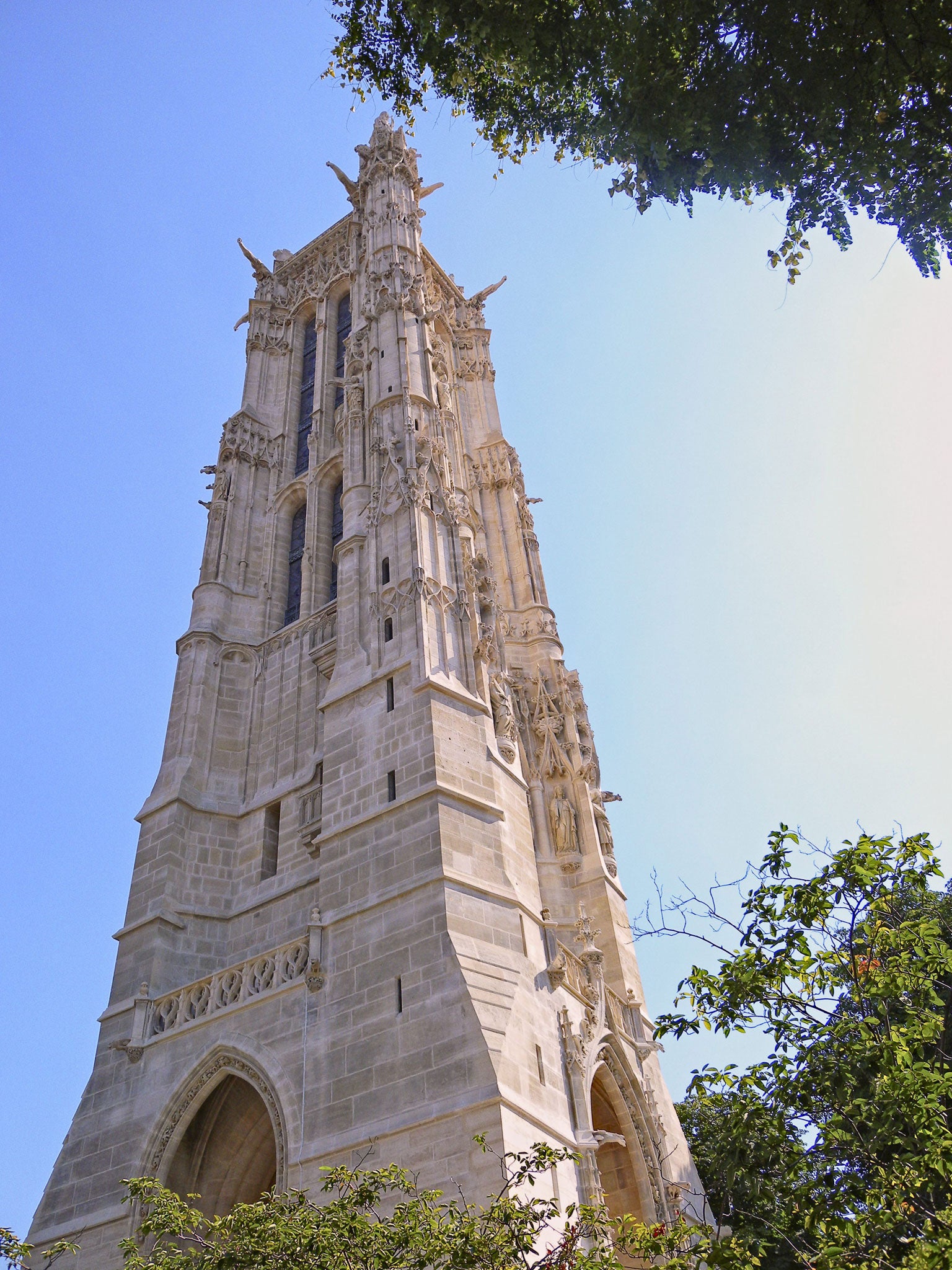Tower at heart of Paris opens to the public for the first time
Gothic edifice that has inspired writers and scientists alike has just undergone a restoration

Your support helps us to tell the story
This election is still a dead heat, according to most polls. In a fight with such wafer-thin margins, we need reporters on the ground talking to the people Trump and Harris are courting. Your support allows us to keep sending journalists to the story.
The Independent is trusted by 27 million Americans from across the entire political spectrum every month. Unlike many other quality news outlets, we choose not to lock you out of our reporting and analysis with paywalls. But quality journalism must still be paid for.
Help us keep bring these critical stories to light. Your support makes all the difference.
The Eiffel Tower has a new rival, five centuries old.
For the first time since it was built in the early 1500s, the Tour Saint Jacques, a mysterious stand-alone Gothic tower in the geometric centre of Paris, is opening to the public this summer.
The 170ft-high tower, long surrounded by myths and legends, has literary connections ranging from Alexandre Dumas to Marcel Proust. It was used by the writer and scientist Blaise Pascal to experiment with atmospheric pressure and weights a century before Isaac Newton developed his theory of gravity.
It has also been, at various times, a weather station, a municipal fire-spotting platform and, in the early 19th century, a factory for making lead shot, which was dropped in molten drops from the top and became cylindrical by the time it reached the ground.
For many centuries the tower, close to the Place du Châtelet, has been one of the traditional starting points for pilgrimages to Santiago de Compostela in northern Spain. For several years, until this June, the tower was engulfed by scaffolding, making it look like a space rocket about to blast off from the heart of the French capital.
But why a tower without a church? The Tour Saint Jacques is all that remains of a medieval church, Saint-Jacques-de-la-Boucherie (Saint James of the butchers) which was destroyed during the French Revolution.
The lost church was the burial place of the medieval scientist and alchemist, Nicolas Flamel, who plays a role in the first book in the Harry Potter series. The tower inspired a play by Alexandre Dumas, La tour Saint-Jacques-la-Boucherie in 1856.
The strange name of the church is explained by the fact that it was re-founded in the early 16th century by the powerful guild of butchers from the nearby Les Halles food market.
Thanks to a campaign by a Parisian archaeologist, Rémi Rivière, the newly restored tower will be open to the public until 15 September.
Small groups will be allowed to ascend the narrow spiral of 300 steps. Until now, only pre-arranged visits have been allowed and none for the last 10 years.
“This tower is the buttonhole of Paris,” Mr Rivière said. “You can observe the whole history of the development of the city from its pinnacle.”
Subscribe to Independent Premium to bookmark this article
Want to bookmark your favourite articles and stories to read or reference later? Start your Independent Premium subscription today.
Join our commenting forum
Join thought-provoking conversations, follow other Independent readers and see their replies
Comments